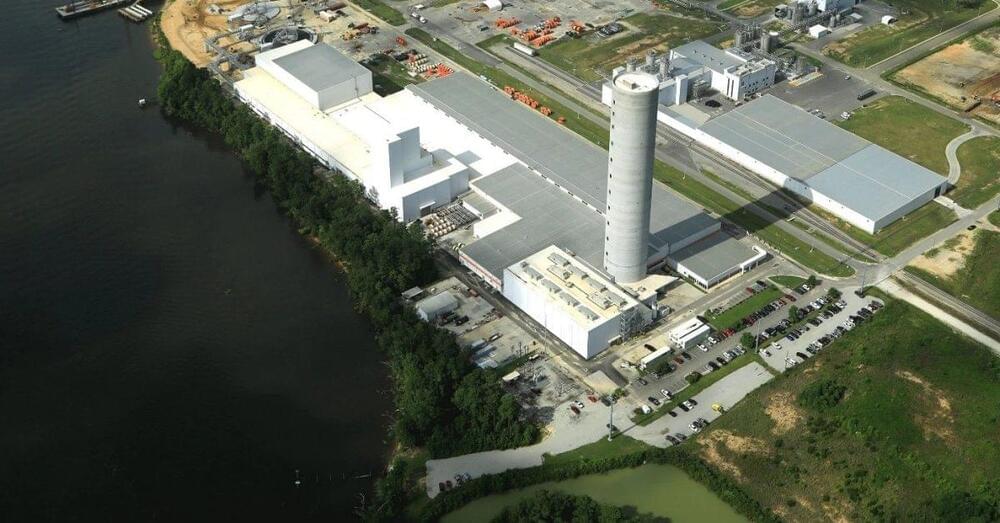Researchers uncover a new cyber mercenary hacker-for-hire group that has been conducting cyber espionage and data theft since 2015.



Ford and Purdue University researchers have developed a new charging cable the automaker claims could allow future EVs to recharge in as little time as a gasoline fill-up.
The patent-pending design uses a new cooling method that harnesses the phase change of coolant from liquid to vapor, Ford said in a press release. Liquid-cooled charging cables aren’t new, but this version can extract more heat, the automaker claims.
A focus on cooling is key to increasing charging speeds. Quicker charging requires more current to travel through a cable, which in turn generates more heat, which needs to be eliminated to keep components functioning, Michael Degner, senior technical leader, Ford Research and Advanced Engineering, said in a statement.
Microsoft and Nvidia have been working hard to finally create an Artificial Intelligence Model which surpasses and beats OpenAI’s GPT3 with more than double the parameter count and almost reaching the amazing and intelligent amount of 1 Trillion Parameter models. Unless OpenAI comes out with GPT4, it seems like the Megatron-Turing NLP AI Model is to be the best and smartest Artificial Intelligence of 2021 which the most abilities of any Natural Language Processing AI ever.
It’s also much easier to train than GPT3. It requires much less hardware and maybe with the upcoming Nvidia Lovelace GPU’s, it’ll be even easier to run for regular consumers.
–
If you enjoyed this video, please consider rating this video and subscribing to our channel for more frequent uploads. Thank you! smile
–
TIMESTAMPS:
00:00 GPT-3 has been beaten.
02:09 How Transformers work.
03:53 What’s new about this AI Model?
05:45 The Future of Artificial Intelligence.
09:32 Last Words.
–
#ai #agi #microsoft

Tesla announced that it reached a new milestone with its Supercharger network: it now has over 30,000 fast-chargers around the world.
Earlier this summer, we reported on how Tesla is gearing up for a giant Supercharger expansion ahead of opening the network to other EVs.
Following Tesla’s confirmation of this, the automaker started hiring many new charging design managers in charge of opening new stations in the US.


When the researchers bathed this engineered silk in sunlight, they found that it stayed 3.5°C cooler than the surrounding air because of its ability to reflect most sunlight and radiate heat. It is the first fabric to be developed that stays colder than the surrounding air when in sunlight.
The researchers also found that when they draped the engineered silk over a surface designed to simulate skin, it kept the skin 8°C cooler under direct sunlight than natural silk did – and it kept the skin 12.5°C cooler than cotton did. The simulated skin was made of silicone rubber that was wrapped around a heater to mimic body warmth.
In the final part of their experiments, they made a collared long-sleeved shirt from the engineered silk and asked a volunteer to wear it while standing out in the sun on a 37°C day. Infrared images revealed that the shirt stayed cool. Similar infrared images captured of the volunteer wearing shirts made of natural silk or cotton showed that these fabrics warmed up. “Wearing the engineered silk on a hot day under sunlight, one feels much cooler than wearing normal textiles such as cotton,” says Zhu.



You.com, an AI-powered search engine cofounded by former Salesforce chief scientist Richard Socher, is launching in beta.
Signup for your FREE trial to Wondrium here: http://ow.ly/NwIS30rNQ5m — Be sure to check out Sean Carroll’s series called, “Mysteries of modern physics: Time” — I highly recommend it!
A good definition of information in physics: “information contained in a physical system = the number of yes/no questions you need to get answered to fully specify the system.”
References:
Lee Smolin’s paper: https://arxiv.org/abs/2104.09945
Prior video on entropy: https://youtu.be/T6CxT4AESCQ
Wave function collapse and time: https://youtu.be/wXJ9eQ7qTQk.
Chapters:
0:00 — Why is time one way but physical laws are not?
2:19 — What is Entropy? Disorder and information.
5:29 — Does entropy cause time?
7:12 — What is time? Recorded past vs future possibilities.
8:07 — Lee Smolin’s theory of time.
10:31 — Will time always flow forward? heat death & big freeze.
12:33 — Best online course on time.
Summary:
In quantum mechanics, it’s just as natural to go forward in time as going backwards. And if you look at a typical Feynman diagram, you can turn the diagram either way. Where does this transition from time symmetry at the quantum level, to time asymmetry at the macro level occur?
To understand its irreversibility, we have to look for other irreversible processes in nature to see if there is any correlation — such as in thermodynamics, Entropy.